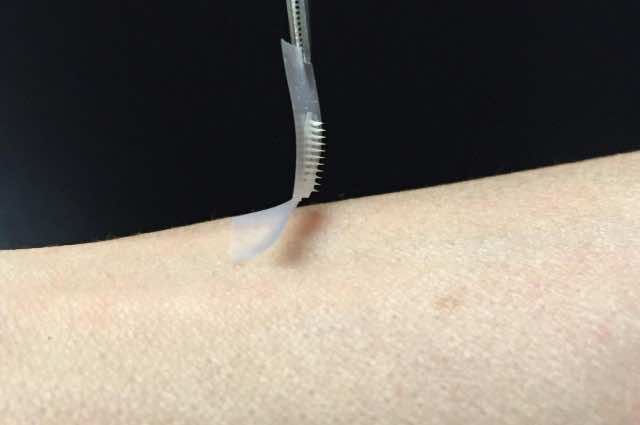Insulin injections can be a real painful experience for those suffering from diabetes. They have to take the injection to keep their sugar levels under control. To prevent this painful procedure for taking care of the blood sugar levels of the patients, a new smart insulin patch has been introduced.
The patch is made from tiny biocompatible needles, that are counted as more than hundred and painless, allow the patch to transfer the required insulin to the body. It is simple to use as the needles on the patch are packed with insulin and glucose sensing enzymes in microscopic units. All the patient needs to do is to apply the patch, which in turn, releases those enzymes to control the high blood sugar levels.
Promising results were revealed by the study that was published in Proceedings of the National Academy of Sciences. These studies were based on the results on a mouse model of type 1 diabetes. Similar success is anticipated by the researchers in the subsequent clinical trials on humans.
According to a study around 387 million diabetes patients around the world prick their fingers regularly to check their blood sugar levels and take repeated insulin shots. In case of injecting an incorrect amount of insulin, the patients can find themselves facing severe complications.
“The whole system can be personalized to account for a diabetic’s weight and sensitivity to insulin,” Zhen Gu, co-senior author stated, “so we could make the smart patch even smarter.”
According to the study the blood sugar levels of mice were lowered for up to nine hours, but the researchers believe that the effect of the patch will be longer-lasting in diabetic patients as humans have higher sensitivity to insulin as compared to mice. Insulin is generated and stored in beta cells that are emulated by the patch. These cells store insulin in tiny sacks named vesicles. These cells play an important role in the monitoring of the blood sugar levels and in the transmission of signals for the release of insulin in the bloodstream.
“We constructed artificial vesicles to perform these same functions by using two materials that could easily be found in nature,” first author Jiching Yu stated.
The researchers joined the substances of hyaluronic acid and 2-nitroimidazole (NI) to form a new molecule that contains a water loving end and a water fearing end. These molecules self-assemble in the vesicle that receives a core of solid insulin and enzymes, these are specifically designed to sense glucose.
The enzymes are converted into excess glucose molecules upon increase in blood sugar levels, these crowd into the vesicles in a product called gluconic acid and this reaction requires oxygen. Hence starving the environment of oxygen. This turns the water-loving NI into water-fearing NI. Ultimately the over-crowded vesicles fall apart and trigger the release of insulin into the bloodstream.
“The hard part of diabetes care is not the insulin shots, or the blood sugar checks, or the diet but the fact that you have to do them all several times a day every day for the rest of your life,” John Buse, co-senior author stated. “If we can get these patches to work in people, it will be a game changer.”

